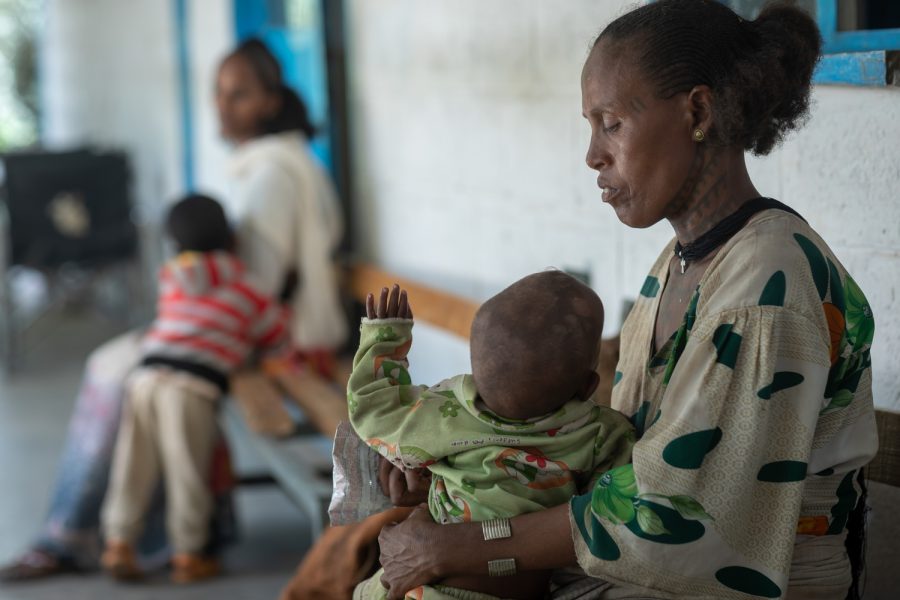Thousands of children are suffering from severe malnutrition and harsh living conditions in the Tigray region of Ethiopia, where an ongoing political conflict has aggravated the crisis.
In November 2020, a war between the Tigray People’s Liberation Front (TPLF), the Ethiopian government, and the government of Eritrea broke out, destabilizing the region. Since then, the conflict has left thousands dead and millions internally displaced, injured, and traumatized from violence.
The war has led to the depletion and destruction of food storage, forcing millions of Tigrayans into famine. Currently, a ceasefire offers hope to the people of Tigray for a chance to gain relief. Despite this, conditions largely remain unimproved.
The war’s consequences have drastically impacted vulnerable groups, particularly children, pregnant and lactating women, and those with weaker immune systems or certain diseases.
Almost one out of every three children under the age of five in Tigray is malnourished, according to a United Nations (UN) article published last June. The issue drew attention from around the world, including a statement by ranking members of the U.S. Senate’s Foreign Relations Committee.
Malnutrition refers to nutrition-related deficiencies, as defined by the World Health Organization (WHO). It can occur by insufficient food consumption, lacking the correct nutrients, overeating, or having digestive tract conditions.
If left untreated, malnutrition can cause physical and mental disability and even death. This issue is exacerbated in children as they are highly susceptible to further complications caused by malnourishment.
A malnourished child lacks the necessary vitamins and minerals to maintain development. If these conditions persist, the child will likely be short for their age, thin, more prone to mental illness, and have a weakened immune system. They are also at elevated risk of losing their senses of sight, taste, and smell.
These symptoms, however, are only the beginning of the suffering the child must endure. Researchers estimate that a malnourished child is around 12 times more likely to die than a healthy child.
In July 2021, the United Nations International Children’s Emergency Fund (UNICEF) projected that over 100,000 children in Tigray would suffer from life-threatening severe acute malnutrition (SAM) in the following 12 months – a tenfold increase compared to the average annual caseload.
“Making matters worse, the malnutrition crisis in the region has coincided with extensive damage to essential systems and services on which children depend for their survival,” said UNICEF Executive Director Henrietta Fore in an official statement. “Mobile health and nutrition teams have been attacked and harassed. Health facilities have been looted or damaged, and essential vaccination capacity has ground to a halt. Many health workers have not returned to work. Destruction of water infrastructure has caused an extreme scarcity of safe drinking water.”
Six months into the conflict, only 27.5% of hospitals, 17.5% of health centers, and none of the 712 health posts in Tigray were functional. As of June 2021, the Tigray population needing emergency food assistance rose from less than one million before the war to over 5.2 million. Unsanitary living conditions have also aggravated the crisis.
“These developments could lead to disease outbreaks, putting malnourished children at even greater risk of death. Sites hosting displaced children and families are especially vulnerable to disease transmission because of overcrowded and unsanitary conditions,” Fore said.
A blockade of humanitarian aid has significantly contributed to the crisis, severely limiting the flow of aid and supplies into Tigray due to the Ethiopian government’s restriction of access to aid agencies. As a result, humanitarian efforts are frequently repressed; there have even been several reports of aid workers being targeted and killed.
Furthermore, aid deliveries that made their way into the region were often stuck there, possibly due to a lack of fuel or fear of harassment at borders.
“Reversing the nutrition, health, water, and food security catastrophe requires a massive scale-up of humanitarian assistance,” said Marixie Mercado, a UNICEF spokesperson, at a 2021 press briefing in Geneva. “And that, in turn, means the humanitarian community must be allowed to conduct its work without hindrance, which includes being able to access fuel, cash, and telecommunications, being able to bring in the supplies needed, and being allowed to conduct normal financial transactions. Failing to meet these conditions could bring humanitarian assistance to a standstill.”
Food and health aid, organized by numerous countries such as the United States, were sent to Tigray. However, deliveries were often delayed or completely halted due to difficulty getting into the region.
“War often creates huge barriers to health for millions of people worldwide. Tigrayans are starving to death, but they can’t get access to the food they need. Malnutrition has already hurt so many young children in their physical growth and brain development,” said Jasmine Randhawa, a junior at Carlmont High School who recently researched the topic of child malnutrition in Tigray in preparation for a Model United Nations conference.
The widespread malnutrition, the destruction of livelihoods, and the collapse of the healthcare system have devastated communities, with long-term consequences for the region’s development, security, and economy. Addressing the humanitarian crisis and ensuring access to food and other basic necessities is regarded by various agencies as essential to prevent further harm.
“With everything that has happened, I think it’s clear that the war will have a lasting impact on the people of Tigray,” Randhawa said.












